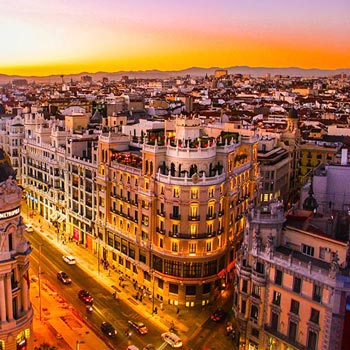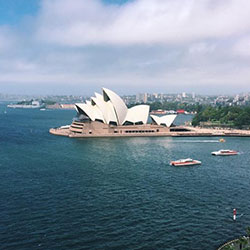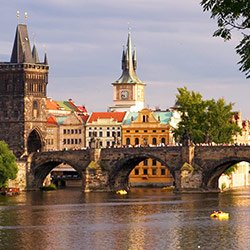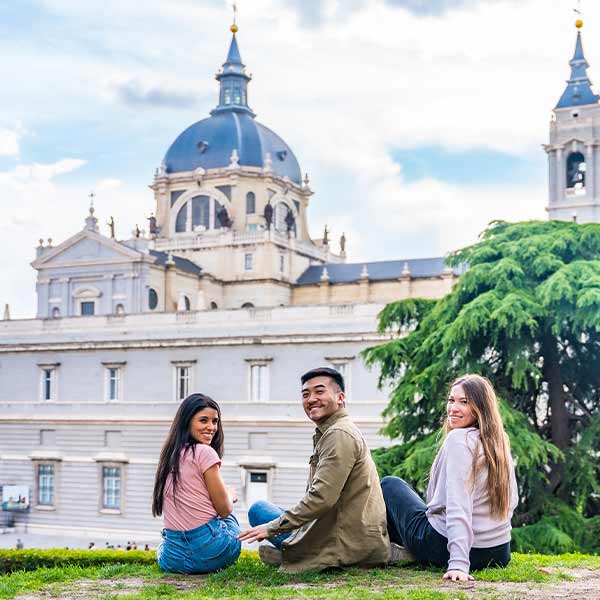Flamenco: A Language of the Heart
As I became more familiar with Sevilla and its vibrant culture, one element that consistently stood out to me was the art of Flamenco. During my four months studying abroad, I experienced firsthand how deeply rooted Flamenco is in the city's identity. I not only learned about its rich history but also had the chance to participate in the tradition by taking dance classes through the University of Sevilla and a class that CEA CAPA set up.
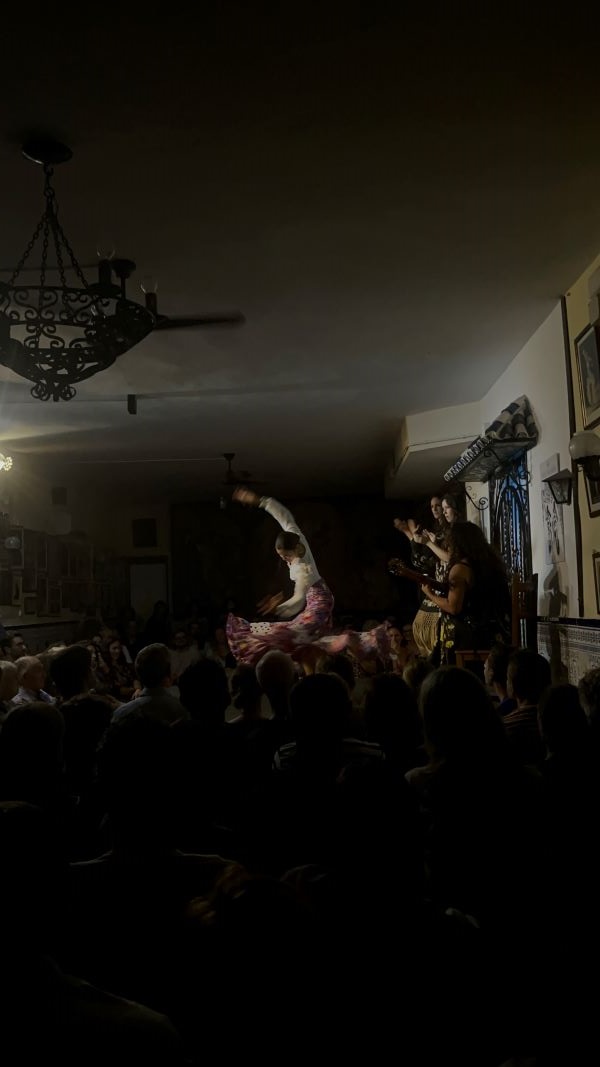
This is a photo of a performance at a flamenco tablao in Sevilla called La Peña Cultural Flamenca Torres Macarena. This was my first real performance I went to and this soon became my favorite spot to watch performances.
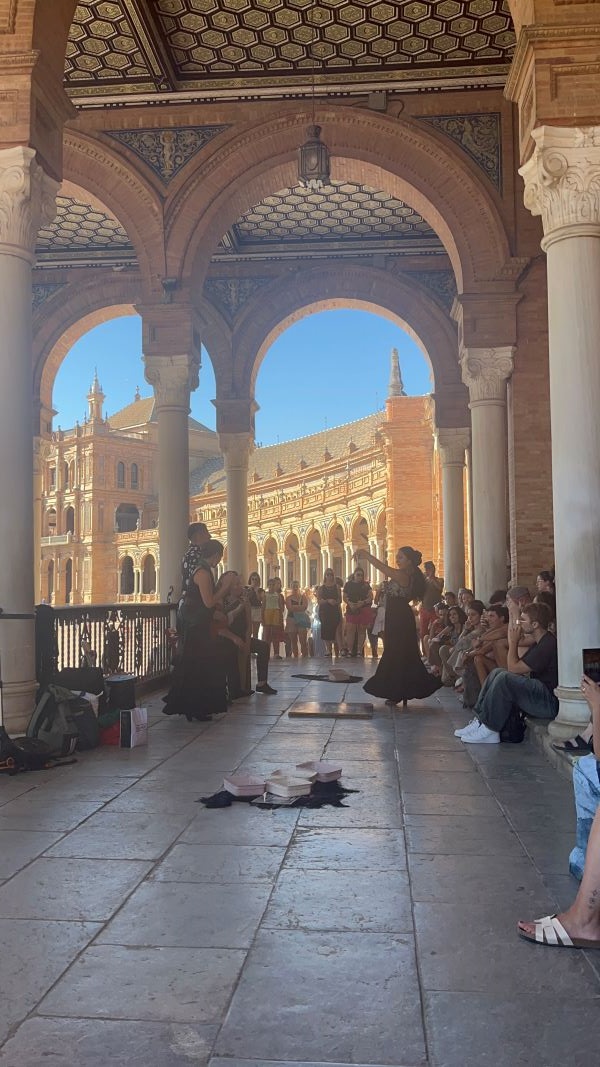
This is a photo of a flamenco street performance at La Plaza de España, Sevilla.
Before arriving in Sevilla, I was excited to be immersed in a place where Flamenco plays such a central role. My connection to flamenco started in 5th grade, when I took classes with a family friend from Spain. I remember performing with my classmates and getting dressed in traditional attire, or traje de flamenco. The dress reminded me of the ones sold in tourist shops. Later, my aunt gave me her castañuelas from when she danced flamenco. One of my CEA teachers and my flamenco teacher taught me how to use them and it amazed me seeing women incorporate them into their dance after realizing how difficult it was to play them.
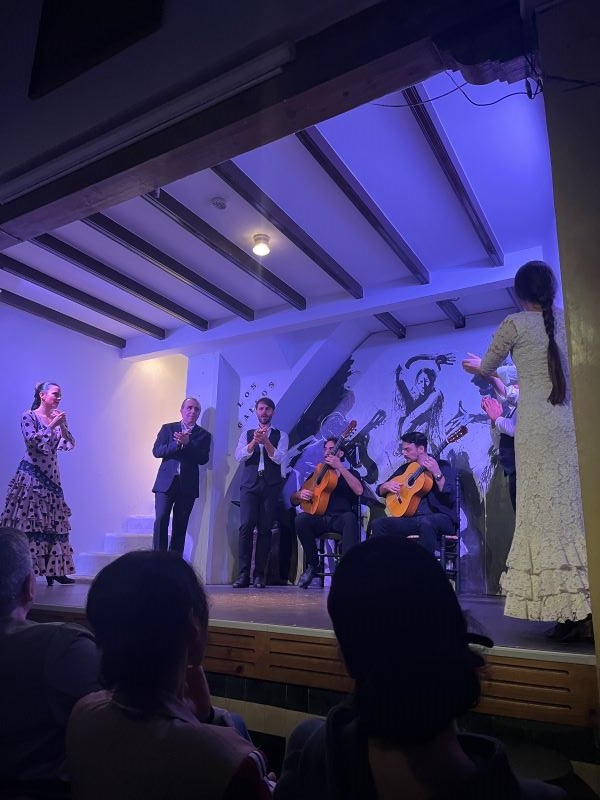
This was from a performance at Tablao Flamenco Los Gallos. My teacher from my flamenco class took us to this show.
-study-abroad-resized.jpg)
This is another photo from La Peña, but showing a different part of the experience. Before the show they serve tapas and drinks, creating a space for people to mingle. This photo really reminded me of the relaxed culture in Spain and seeing a mix of locals and tourists shows how flamenco brings so many people together.
While in Sevilla, I deepened that connection by enrolling in a flamenco class through the University of Sevilla. My professor taught us not just the dance steps but also the cultural and historical roots of flamenco. I learned how it originated from the Roma people of Andalucía and became a way to express pain, resistance, and joy during centuries of marginalization.

This is from a performance that CEA CAPA took us to. It was a private performance for us and it was the first time I saw a dancer use castañuela, or castanets in English.
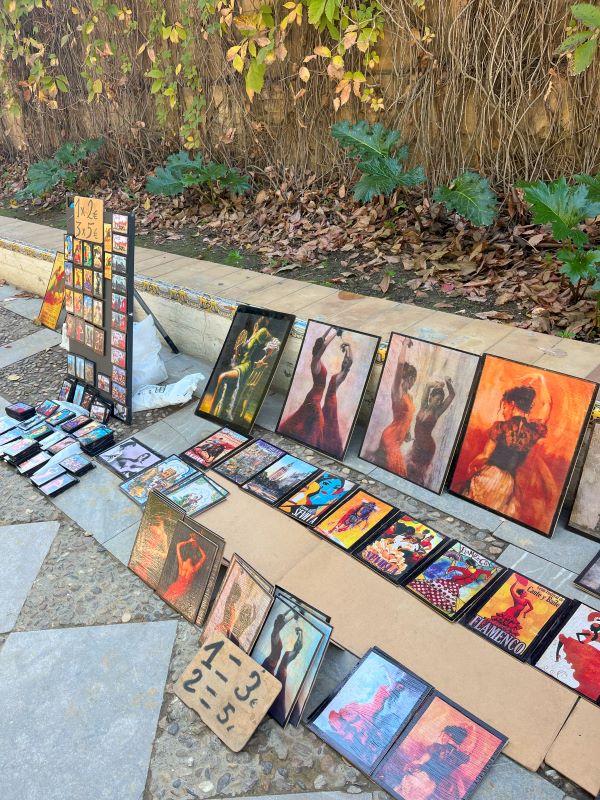
This is from outside of the CEA CAPA center. There were always vendors selling their art and more times than not they were related to flamenco. It showed me how important flamenco was to the people of Sevilla.
Before this class, I had always thought of flamenco as purely a dance, but I came to understand it as a complex, expressive art form made up of el cante (singing), el toque (guitar), and el baile (dance)—each responding to and influencing the other. Flamenco is deeply improvisational, with performers building off one another in real time.

Aside from flamenco, dancing in general was a big part of my time abroad. This is a photo of me dancing with a group of people we met that were visiting from Poland. They were playing the ukulele in the street and by the end we had a big group of people all dancing together!
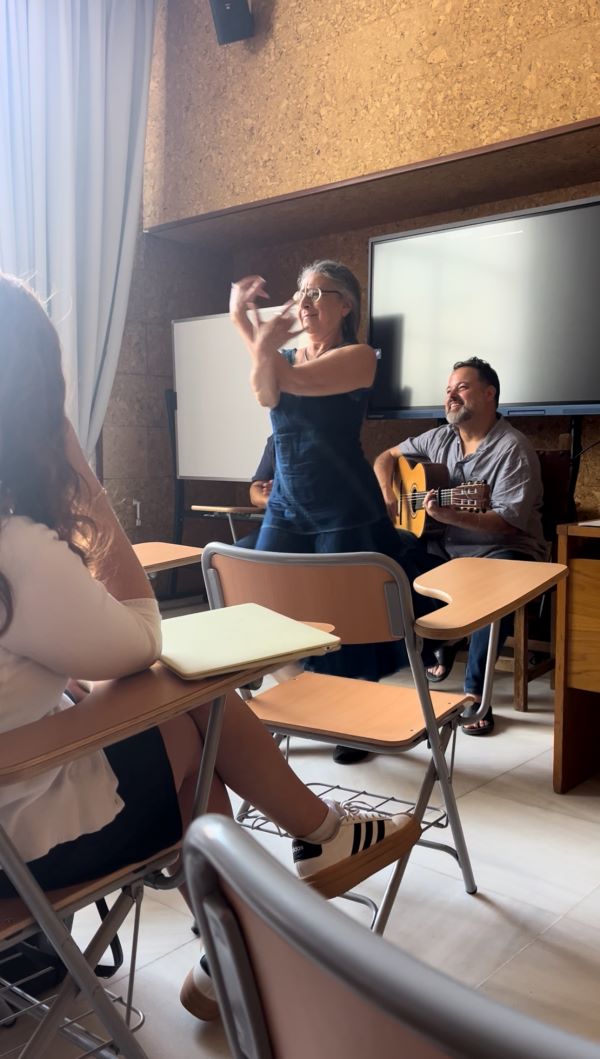
In my time abroad, I took a flamenco class at the University of Sevilla. One day my teacher brought in a singer and guitarist to perform for us and she joined in and danced alongside them.
Whether at a tablao (a traditional flamenco venue), in a theater, at festivals, family celebrations, or even on the streets, flamenco is woven into everyday life in Sevilla. On a teacher’s recommendation, my favorite place to watch performances became a small tablao called La Peña Torres Macarena. Hidden on a quiet street, its intimate setting and emotional performances made each show feel personal and unique. Whenever I had visitors, I brought them there. Each performance showcased the individual artistry of the performers, and my favorite part was always the end, when other artists in the audience and serious aficionados would take turns dancing on stage. Sometimes even the guitarist would join in.
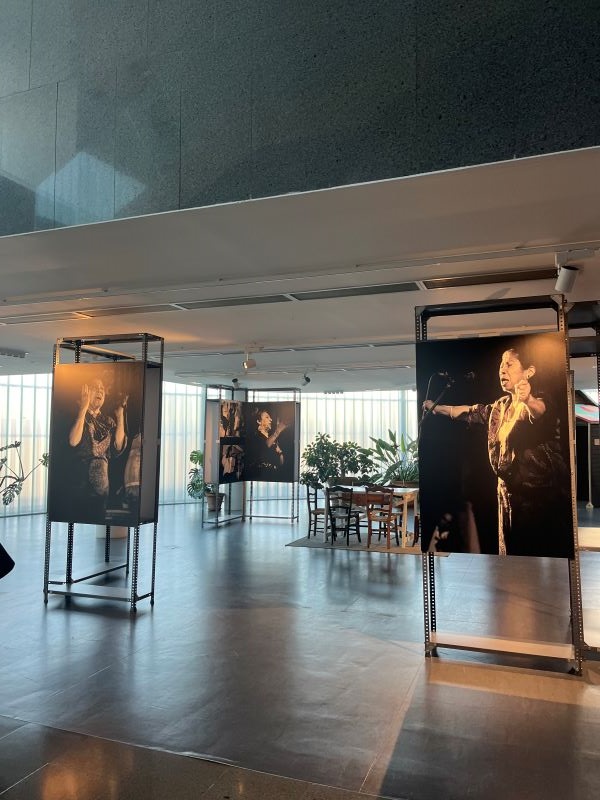
This is from an exhibit dedicated to the art of flamenco at the Factoría Cultural, a cultural center and artistic creation of the city of Seville located in the Polígono Sur.
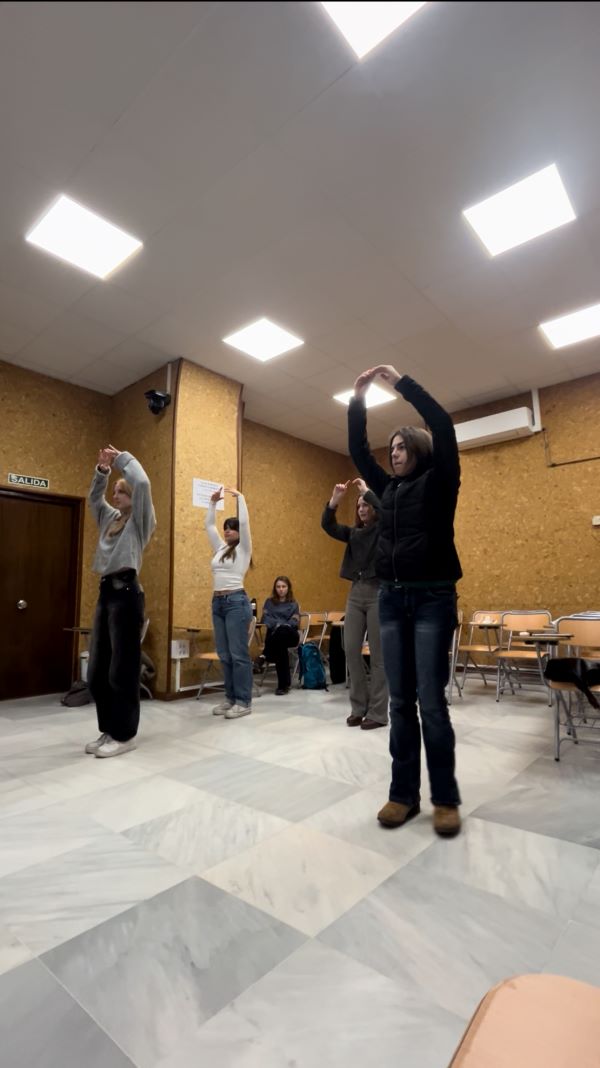
This last photo is from the last day of our flamenco class. My friends from the class are performing the dance we learned, and it was so cool seeing it all come together!
What I loved most about flamenco was how it created a sense of community. It wasn’t just a performance, it was a living tradition, passed down through generations like a shared language. Families used it to celebrate joy, to mourn, and to connect on a deeply emotional level. I had the chance to speak with a well-known guitarist in Sevilla who told me he had learned from his father, who had been taught by his own father. Flamenco guitar, like so much of the tradition, lives through family and memory.
Overall, flamenco became one of the most meaningful parts of my time in Sevilla—it deepened my understanding of the culture and helped me feel truly connected to the people, the history, and the rhythm of life in Spain.
This post was written by Jayda Bodas, a CEA CAPA Alumni Ambassador from Cal Poly, and studied abroad in Seville, Spain.
